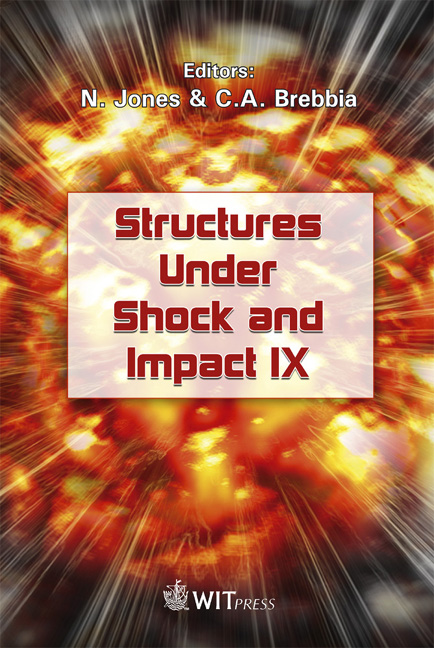Reactive Powder Concrete Plate Response To A Flat Projectile Impact
Price
Free (open access)
Transaction
Volume
87
Pages
10
Published
2006
Size
1,246 kb
Paper DOI
10.2495/SU060331
Copyright
WIT Press
Author(s)
Y.-S. Tai & C.-C. Tang
Abstract
Reactive powder concrete (RPC), which is a composite that has been developed in recent years, is a special mixture that is cured especially to have a higher compressive strength than that of concrete (about 200 MPa). Adding a few steel fibers can greatly improve its tensile and bending strength, its impact resistance, and its toughness. It is therefore expected to be used to containment structures of nuclear power plants and protect military facilities. In this study, high-velocity impact experiments were conducted to assess the resistance of the ultra-high strength concrete targets. Test variables include impact velocity and the addition of steel fibers. The results of the test show that RPC plates, because of their higher compressive strength, are more fragile than NC plates but on addition of a small amount of steel fibers a significant improvement in impact resistance was observed in the target plates. In addition, a numerical simulation using the nonlinear finite element code LS-DYNA was also performed. The Johnson-Holmquist concrete material constitutive model was used. The numerical results are in agreement with the results obtained from the experiment. Keywords: impact experiment, RPC, steel fiber reinforced concrete, numerical simulations. 1 Introduction The response of concrete to transient dynamic loading is investigated extensively for both civil and military applications. In the past, for a structure to have greater impact resistance, mostly a higher reinforcement ratio was adopted or the thickness of structural members was increased. Because the reinforcement is too dense in structural members, the concrete is quite difficult to cast. In modern
Keywords
impact experiment, RPC, steel fiber reinforced concrete, numerical simulations.





